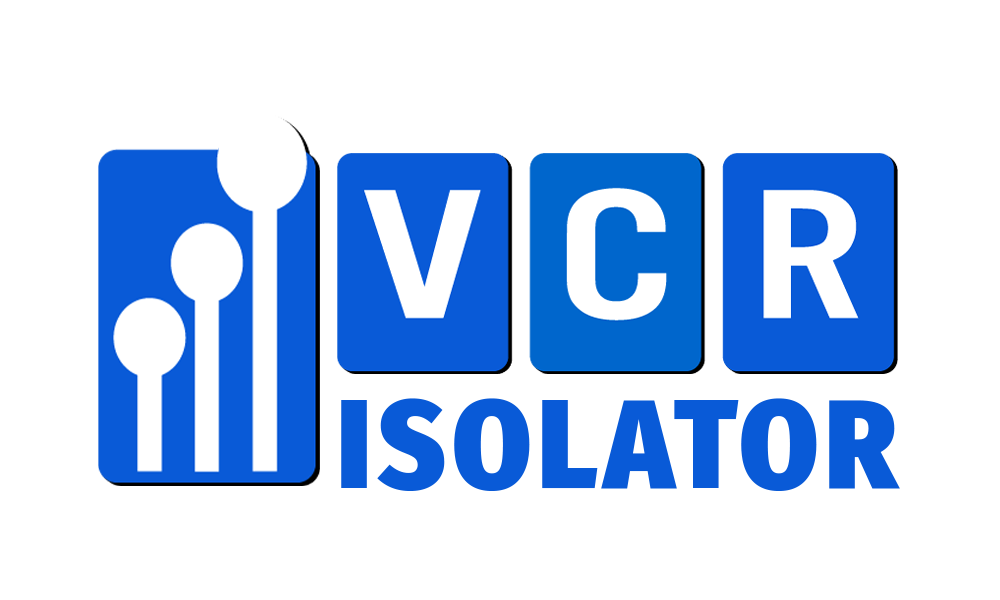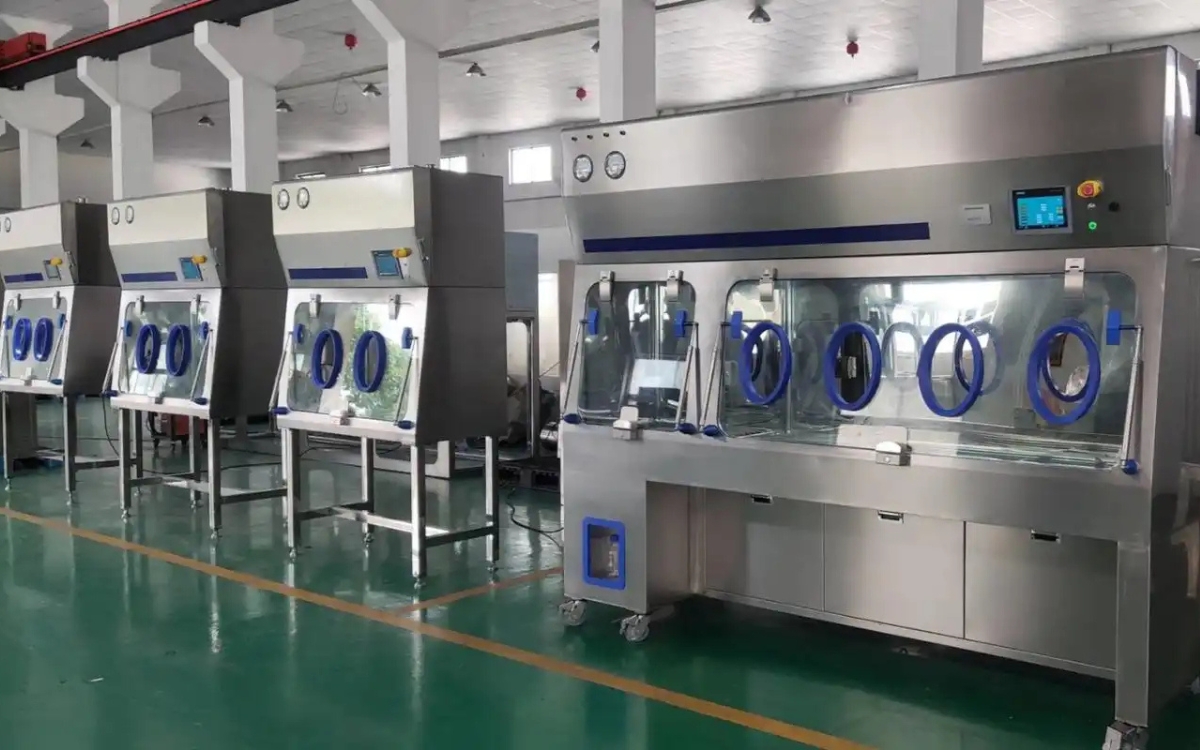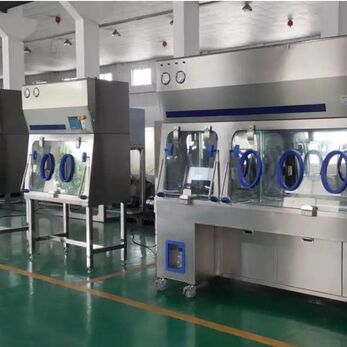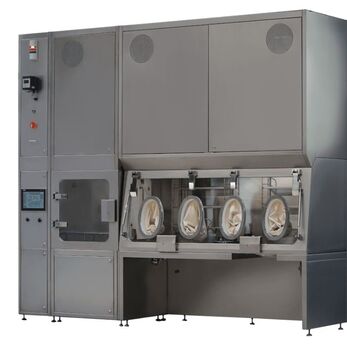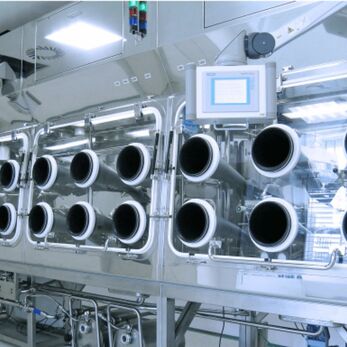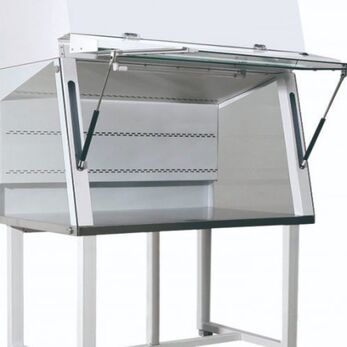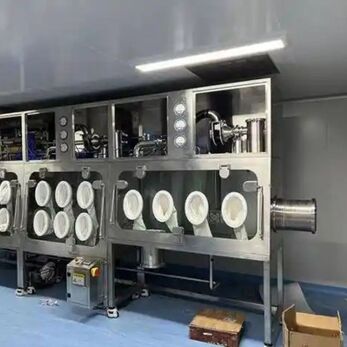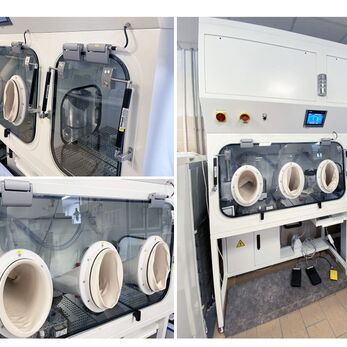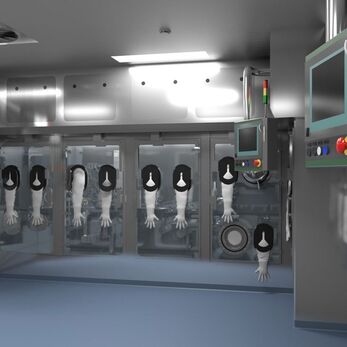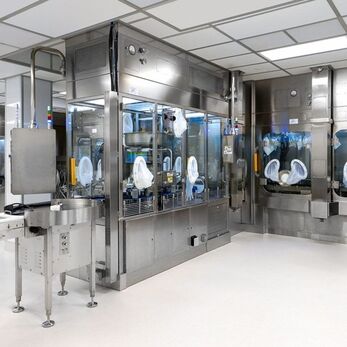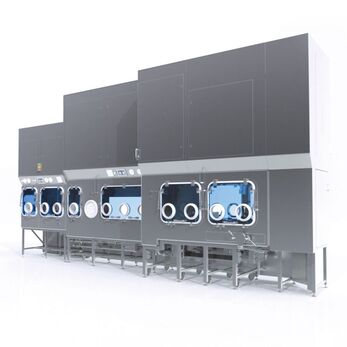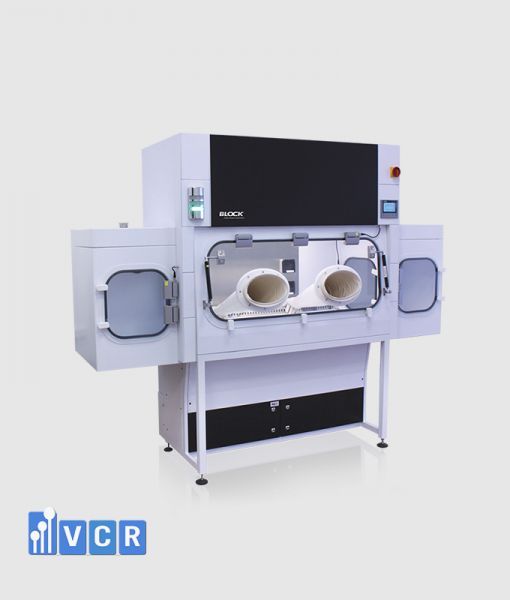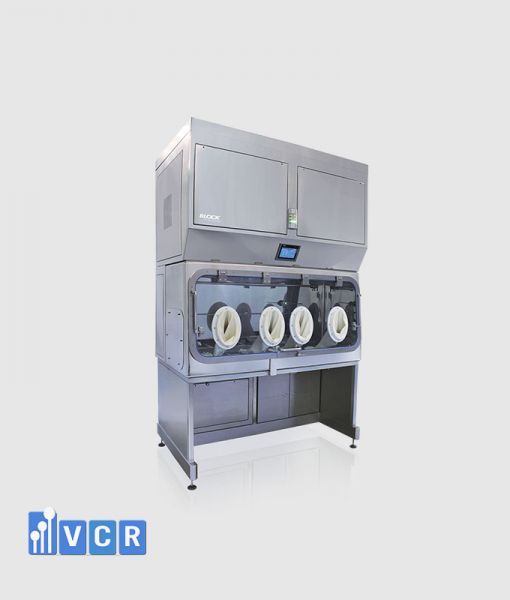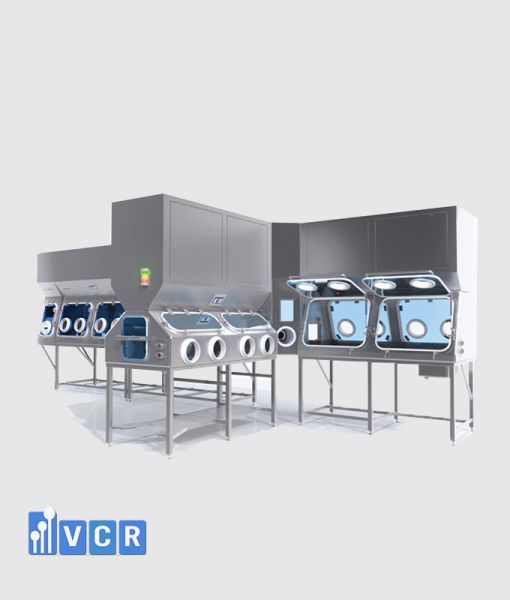Isolator is a closed chamber device that acts as a safety “shield” in food production areas with a high risk of contamination. With the ability to block fine dust, microorganisms and impurities, Isolator helps protect both the product and the operator, especially in the mixing, filling and packaging stages.
- 1. What is an Isolator in a Food Manufacturing Facility?
- 2. When Should an Isolator Be Used in Food Manufacturing?
- 3. Common Types of Isolators in the Food Industry
- 4. Key Factors Affecting Isolator Pricing
- 5. Latest Isolator Price List from VCR (2025)
- 6. How to Choose the Right Isolator for a Food Manufacturing Plant
- 7. Frequently Asked Questions About Isolators in the Food Industry (FAQ)
- 8. Contact for Quotation & Isolator Consultation for Food Manufacturing
1. What is an Isolator in a Food Manufacturing Facility?
Definition of Isolator
An isolator is a sealed cabinet typically used in clean production environments such as pharmaceuticals, food, and cosmetics. Its purpose is to protect either the product or the operator from contamination by microorganisms, fine dust, or other external particles.
In the food industry, isolators are commonly installed in high-risk contamination areas such as: micro-dosing rooms, filling stations, and packaging lines for nutritional products, functional foods, or moisture- and microbe-sensitive items.
Operating Principles
Isolators operate based on two main mechanisms:
- Creating a completely sealed environment between the product and the surrounding air using a tight enclosure combined with glove ports or lockable transparent doors.
- Air filtration and pressure control to maintain a clean air environment inside the working chamber:
- Positive pressure: Protects the product from outside contaminants; typically used in formulation and packaging zones.
- Negative pressure: Protects the operator from hazardous fumes or powders during handling.
- The air is filtered through HEPA H13/H14 or ULPA filters, capable of removing ≥ 99.995% of particles ≥ 0.3 microns, ensuring ISO Class 5 (Class 100) cleanroom standards.
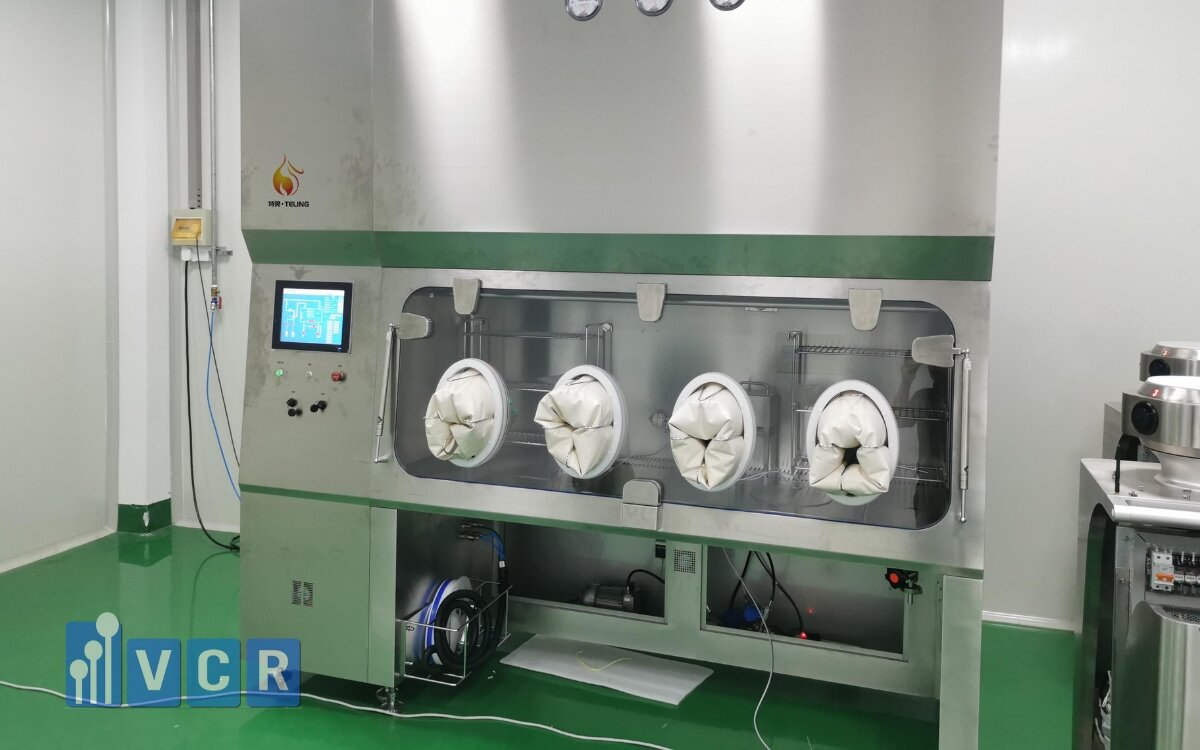
Role in Cross-Contamination Control and Product Protection
In food manufacturing, isolators play a critical role by:
- Preventing cross-contamination between product lines - especially in handling powders, allergens, or sensitive ingredients.
- Maintaining a consistently clean environment throughout operations, ensuring food safety standards and reducing product recall risks.
- Enhancing process control and traceability, especially when integrated with sensors, environmental monitoring, and data logging systems.
An isolator is not just a cleanroom device - it is an active containment solution, highly recommended in modern production systems where product safety and consumer health are top priorities.
2. When Should an Isolator Be Used in Food Manufacturing?
High-Risk Contamination Areas
Many areas in food processing lines are prone to cross-contamination, fine dust dispersal, or microbial risks — especially when handling powders, active ingredients, or products that demand a high level of cleanliness. Isolators are recommended in the following zones:
- Micro-dosing areas: Precise operations involving milligram-level ingredients require separation from ambient air to prevent contamination in either direction.
- Packaging zones: Final product handling and packaging must be tightly controlled to avoid recontamination.
- Quality control (QC) laboratories: When testing microbiological samples or raw materials, isolators create the necessary sterile environment.

Compliance with HACCP, ISO 22000, and FSSC 22000 Standards
Using an isolator is not only a quality control measure, but also a solution to meet international food safety standards:
- HACCP requires identification and control of Critical Control Points (CCPs). High-risk handling zones are often identified as key CCPs.
- ISO 22000 and FSSC 22000 recommend equipment and areas in direct contact with food to be isolated, easy to sanitize, and consistently clean.
- An isolator - when combined with HEPA filtration and pressure control - provides a clear preventive measure that helps companies achieve certification and pass audits by customers and certification bodies.
See more: Compounding Aseptic Isolators: Navigating the Evolving Regulatory Landscape
3. Common Types of Isolators in the Food Industry
|
Type of Isolator |
Number of Glove Ports |
Primary Application |
Operating Pressure |
Key Features |
Recommended Usage |
|
Single-sided Isolator |
2 gloves |
Micro-dosing, single-operator handling |
Positive pressure |
Compact design, HEPA H13 filter, viewing window, optional UV lamp |
Raw material weighing, simple QC tasks |
|
Double-sided Isolator |
4 gloves |
Two-person operation, packaging |
Positive pressure |
Dual-side access, pressure sensors, chemical-resistant gloves |
Sensitive product packaging zones |
|
Isolator with Pass Box |
2-4 gloves |
Material transfer between clean zones |
Positive or balanced |
Electronic interlock, HEPA-filtered pass box, UV lamp |
Transfer from compounding room to packaging |
|
Negative Pressure Isolator |
2-4 gloves |
Handling hazardous materials or microbiology |
Negative pressure |
Dual-stage exhaust filtration, leak detection sensors |
Testing labs, high-risk material handling |
|
Mobile Isolator |
1-2 gloves |
R&D, QC, flexible positioning |
Positive pressure |
Movable on wheels, compact frame, easy to clean |
Laboratories, flexible working areas |
|
Custom URS Isolator |
As requested |
Custom design per GMP layout |
Positive/negative pressure |
Fully customized materials, filtration level, controls, layout |
Large-scale or international-standard food factories |
4. Key Factors Affecting Isolator Pricing
Isolator prices vary widely depending on technical specifications and customization requirements. Below are the main pricing factors for food manufacturing environments:
1. Number of Glove Ports
- 1 port: Suitable for single-operator tasks, fewer airflow controls required, more cost-effective.
- 2 ports: Enables dual-person operation, requires more precise pressure control → 20-30% cost increase.
2. Air Filtration Level
- HEPA H13: Standard, removes ≥ 99.97% of ≥ 0.3 µm particles, cost-effective.
- HEPA H14: Removes ≥ 99.995%, suitable for GMP or ISO Class 5 environments.
- ULPA: For ultra-clean areas, more expensive and less common in the food sector.
Higher filtration level = stronger filters & blowers = increased cost.
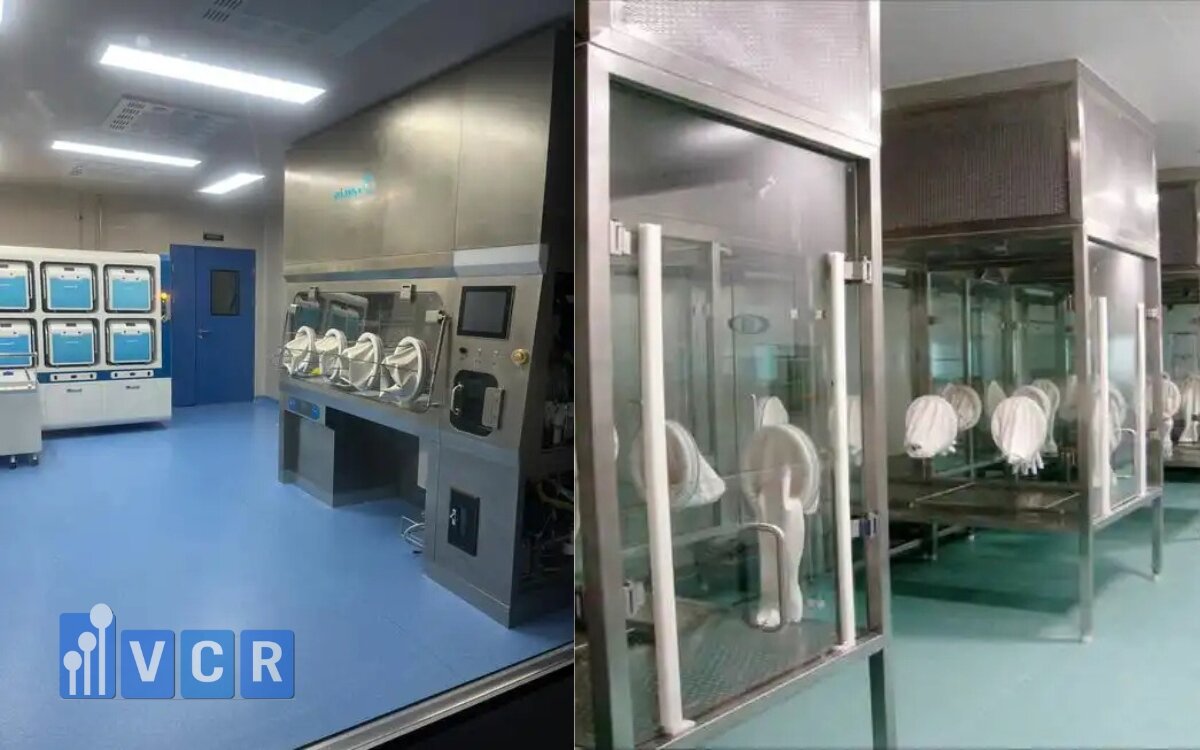
3. Construction Materials
- Stainless Steel 304: Common in food industry, corrosion-resistant, reasonable cost.
- Stainless Steel 316L: Superior corrosion resistance, used with salts or mild acids.
- Multi-layer safety glass / UV-resistant glass: Enhances safety, increases cost.
4. Additional Features (Optional Upgrades)
|
Feature |
Primary Function |
|
Differential pressure sensor |
Alerts for pressure loss, ensures safe operation |
|
UV lamp |
Surface sterilization |
|
Integrated Pass Box |
Transfers items without opening the main door |
|
Door interlock |
Prevents simultaneous door opening, maintains pressure |
|
PLC touch control |
Logs and monitors operator activity and environmental data |
5. Origin and Customizability
- Domestic manufacturing (e.g., VCR): Competitive pricing, fast support, high flexibility.
- Imported units (EU, Japan, Korea): 25-40% higher cost, longer delivery, harder to source spare parts.
6. Quantity and Design Complexity
- Large volume orders often receive discounts.
- Custom designs tailored to factory layout or automated lines require site surveys and custom quotes.
See more: Cleanroom Isolators Enhancing Aseptic Processing
5. Latest Isolator Price List from VCR (2025)
The following is a reference price list for popular isolator models in the Vietnamese market as of 2025. Pricing may vary depending on technical configurations, materials, component brands, certifications, and custom design requirements for each project.
|
Isolator Type |
Glove Ports |
Main Application |
Pressure Type |
Estimated Price (VND) |
|
2-Glove Isolator |
2 gloves |
Sterile material weighing |
Positive |
950,000,000 - 1,300,000,000 |
|
4-Glove Isolator |
4 gloves |
Filling and packaging |
Positive |
1,500,000,000 - 2,500,000,000 |
|
Negative Pressure Isolator |
2-4 gloves |
Handling microbiology, toxic substances |
Negative |
1,200,000,000 - 2,000,000,000 |
|
Mobile Isolator |
1-2 gloves |
QC or R&D lab usage |
Positive |
650,000,000 - 850,000,000 |
|
Custom URS Isolator |
As required |
GMP EU, PIC/S compliant production |
Positive/Negative |
From 2,500,000,000 and above |
Note: Prices exclude VAT, shipping, installation, and on-site calibration. Please contact us for an accurate quotation based on your technical documents or URS drawings.
6. How to Choose the Right Isolator for a Food Manufacturing Plant
Choosing the right isolator not only protects your product and meets food safety standards (HACCP, ISO 22000) but also optimizes investment and operational efficiency. Below are some key selection criteria:
1. Based on Product Type
|
Product Type |
Key Characteristics |
Recommended Isolator |
|
Powdered functional foods |
Generates dust, sensitive to microbes |
2- or 4-glove isolator, HEPA H14, positive pressure |
|
Probiotic or microbial-rich products |
Cross-contamination risk, requires sterile environment |
Isolator with VHP sterilization, microbial sensors |
|
Additives, colorings, flavors |
Potentially hazardous or volatile |
Negative pressure isolator, dual-stage exhaust, gas alarm |
|
R&D products |
Small scale, needs flexibility |
Mobile isolator, compact and easy to move |
2. Based on Manufacturing Zone
|
Production Area |
Common Risks |
Suitable Isolator |
|
Raw material weighing |
Dust dispersal into the room |
2-glove isolator, positive pressure |
|
Final packaging area |
Risk of product recontamination |
4-glove isolator with integrated HEPA air filtration |
|
Microbiology or QC labs |
Cross-contamination, repeated handling |
Negative pressure or URS-designed isolator |
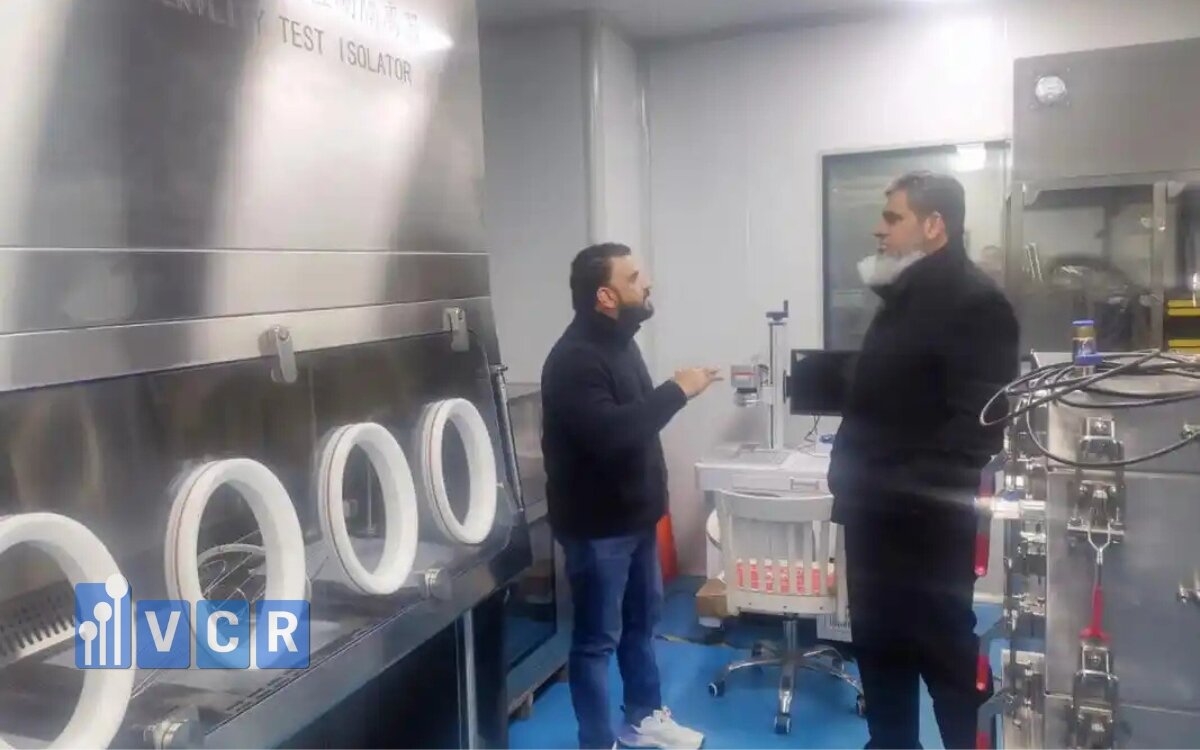
3. Based on Plant Size & Budget
- Small to medium factories: Use standard 2-glove or mobile isolators to save space and cost.
- Automated production lines: Choose isolators with PLC integration, sensors, and data logging features.
- Projects under GMP EU/PIC/S: Must use custom URS isolators with full alarm systems, pressure zoning, ULPA filters, or VHP sterilization.
4. Important Selection Notes
- Don’t choose isolators based on price alone — assess technical suitability for your specific process.
- Always request on-site assessment and 2D/3D layout drawings from the supplier to optimize space usage.
- For regulated equipment, ensure the supplier offers installation, calibration, and IQ/OQ/PQ validation services.
7. Frequently Asked Questions About Isolators in the Food Industry (FAQ)
- Is it mandatory to use isolators in food manufacturing plants?
Not legally required, but highly recommended in high-risk contamination zones such as micro-dosing, filling, and packaging. Isolators help meet standards like HACCP, ISO 22000, FSSC 22000, and significantly reduce product quality risks.
- What’s the difference between an isolator, pass box, and air shower?
- Isolator: A fully sealed workstation with HEPA/ULPA filtration and pressure control, used to protect either the product or operator during handling.
- Pass Box: Used only for material transfer between clean areas. No manipulation is allowed inside.
- Air Shower: Removes electrostatic dust from personnel before entering the cleanroom. Does not provide a sealed environment like an isolator.
Each has a unique function and cannot substitute for one another.
- How often should HEPA filters in an isolator be replaced?
Typically every 12-18 months, depending on usage and environment. Regular differential pressure monitoring is needed to determine the proper replacement time.
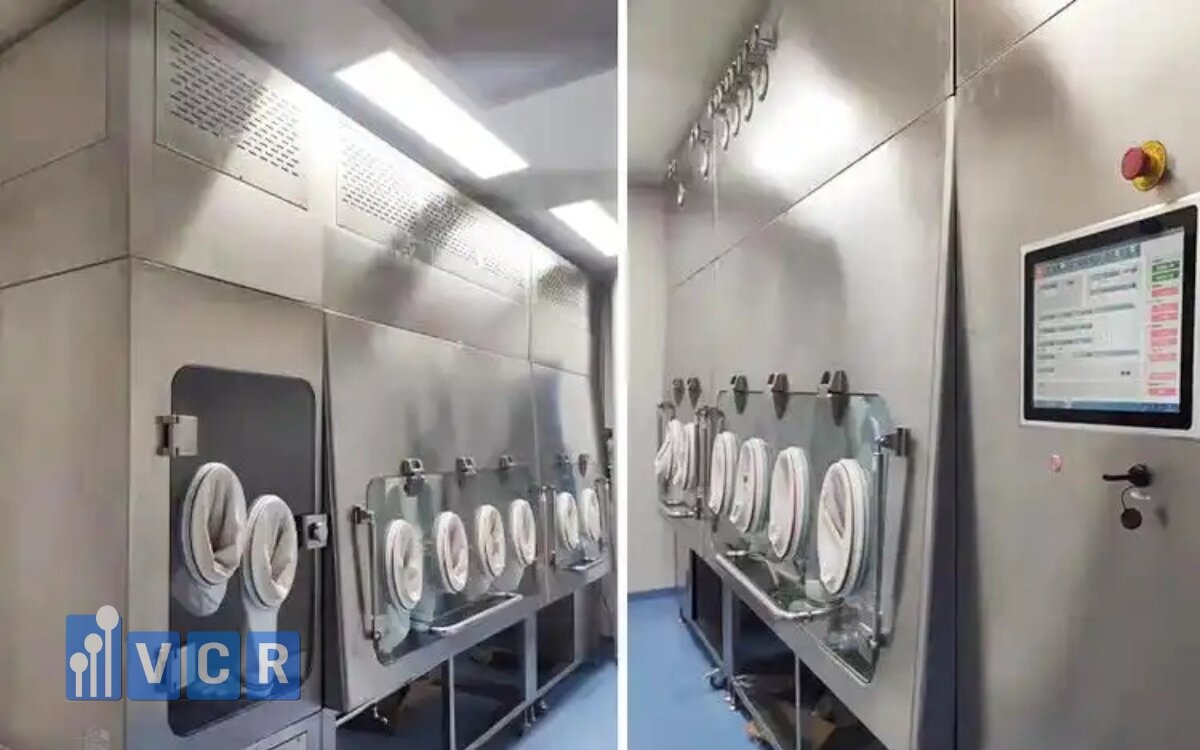
- Can isolators be custom-built to specific sizes and requirements?
Yes. VCR offers custom design services based on URS drawings, fully compliant with GMP EU, WHO, ISO standards. You can specify material, glove count, filter grade, PLC controls, and data logging features.
- Does VCR provide on-site installation and validation?
Yes. VCR offers full turnkey services: site survey - design - manufacturing - installation - calibration - IQ/OQ/PQ validation as per your project requirements.
- Is any certification required for isolators used in the food industry?
No specific certification is required for the equipment itself. However, using isolators enhances your food safety procedures and facilitates successful audits by clients or certifying bodies (HACCP, ISO, GMP).
See more: Key Considerations When Selecting a Pharmaceutical Isolator
8. Contact for Quotation & Isolator Consultation for Food Manufacturing
Need help choosing the right isolator for weighing, packaging, or QC zones in your food plant? Let the expert team at VCR - Cleanroom Equipment support you from start to finish:
On-site technical survey at your factory
Free layout design (2D/3D drawings)
Fully customized per GMP, ISO, HACCP, or URS
Nationwide delivery - Installation - Calibration - Maintenance
Contact us now:
Hotline: 090.123.9008
Email: [email protected]
Website: https://isolator.vn/
Diep VCR


